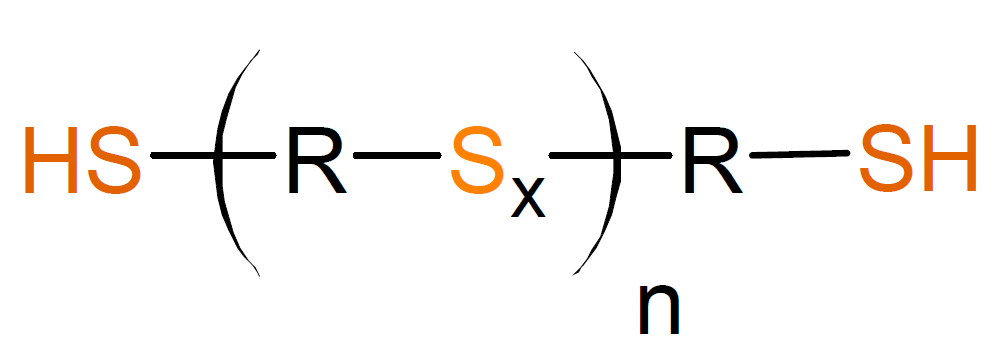Polysulfides (Thiokols and Polymercaptans)
Properties and Applications
Aliphatic polysulfides, also known as thiokols (T), are one of the oldest specialty elastomers.1 These sulfur containing polymers are prepared by the reaction between alkali metal polysulfides and α,ω-dihalo organic (ether) compounds.2,3 The reaction products have the general backbone structure

Thiokols are medium to high viscous liquid polymers with low moisture permeability and outstanding chemical and oil resistance. They can be cured (vulcanized) to high molecular weight elastomers using oxygen donating compounds such as manganese, zinc and calcium dioxide, cumene hydroperoxide, or p-quinone dioxime. These elastomers possess high flexibility, good tensile strength and excellent resistance to many oils and solvents including aliphatic and aromatic hydrocarbons, esters, ketones, dilute acids and alkalis. They also have excellent resistance to ozone, oxidation, sunlight, and weathering. On the down side, they have poor thermal stability and creep resistance, lower resilience when compared to most other synthetic elastomers and they often possess an unpleasant odor. Polysulfides are also effective modifiers for epoxy systems and allow for fast cure. They impart excellent flexibility, and good impact and chemical resistance, particularly when combined with other curatives such as amines or polyamines.
Polysulfides are widely used as the base polymer for sealants, caulks, and coatings. Other industrial applications include gaskets, O-rings, lubricant additives, moulding compounds, epoxy adhesives, and electrical potting compounds. Due to their low cost, excellent insulation properties and resistance to weathering, they are extensively used in the building & construction, marine, and aerospace industries.